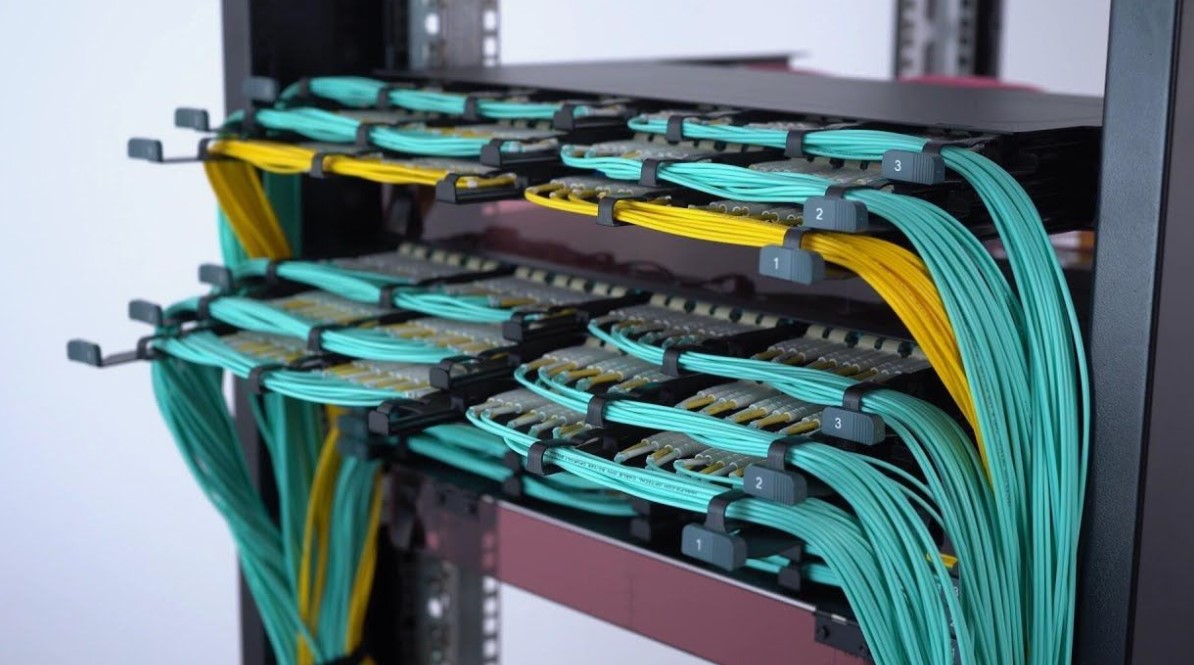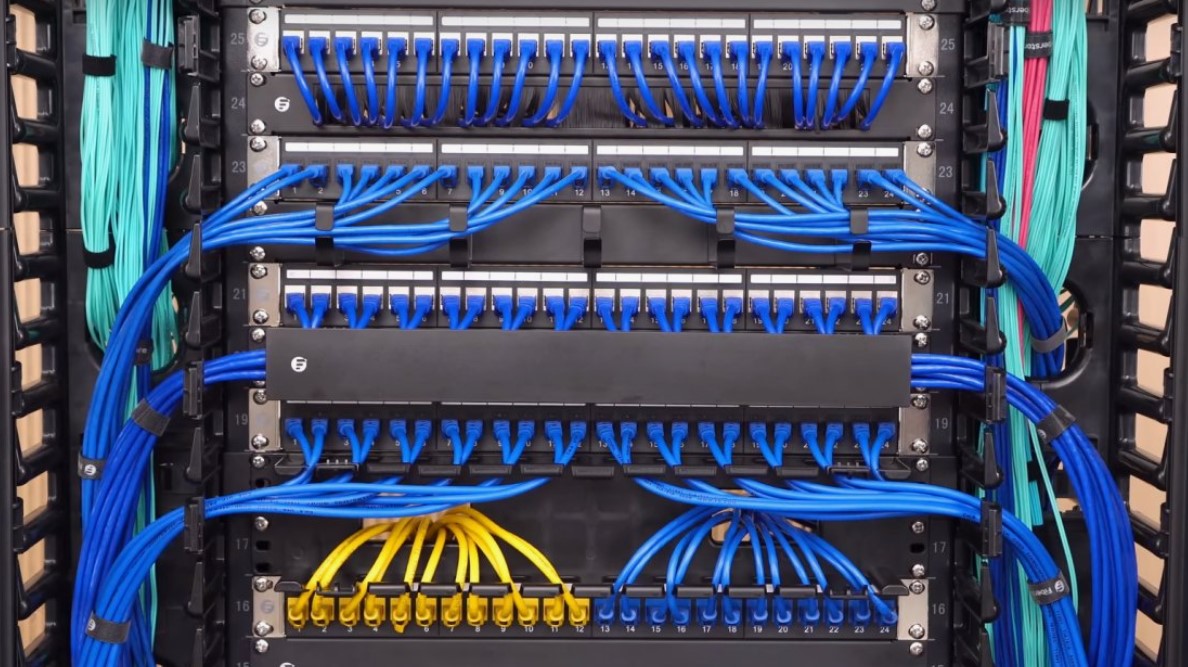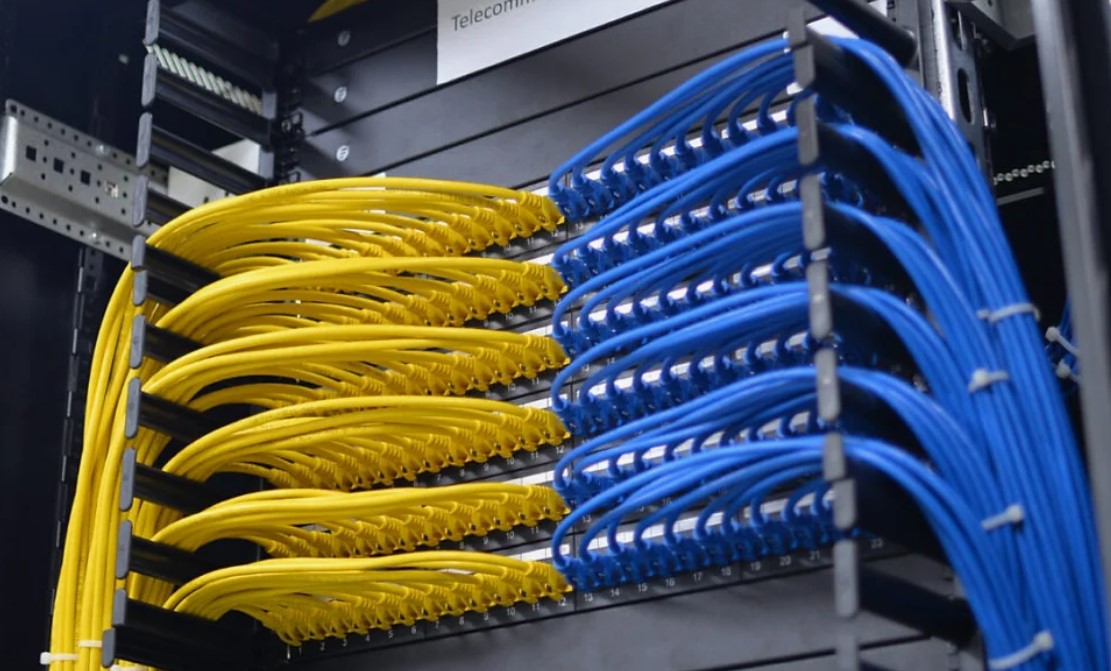Server cabinet cable management plays a pivotal role in the efficient operation of data centers and IT infrastructure. Beyond just tidying up cables, proper “server cabinet cable management” reduces costs, increases productivity, and prevents potential operational disruptions. By carefully planning and maintaining a well-organized cable system, businesses can improve performance, simplify system maintenance, scale more easily, and reduce time spent on troubleshooting. In essence, good “server cabinet cable management” fosters long-term reliability and enhances the scalability of an IT infrastructure.
The Importance of Proper Labeling and Documentation
One of the most critical, yet often overlooked, aspects of cable management is proper labeling and documentation. When cables are not clearly labeled, it becomes nearly impossible to efficiently manage the server environment. Labeling provides a roadmap that can be followed during installation, upgrades, maintenance, and troubleshooting.
Detailed Labeling for Quick Identification
Each cable in a server cabinet should be clearly marked with identifying information, including the cable’s purpose, its direction, and the devices it connects. The labeling process can be further enhanced with details such as the type of connection (e.g., power, network, data storage), cable category, and even the date of installation or the responsible technician. This detailed labeling ensures that technicians can quickly identify the cable needed for a task, reducing the risk of errors and accidental disconnections.
For example, a cable labeled as “Network A to Router 1, Port 4″ provides immediate information about its function and destination. If a network issue arises, this information helps the technician quickly locate and address the problem. Proper labeling also makes it easier to identify cables when adding or removing equipment, as technicians can quickly determine whether a cable is needed or obsolete.

Documentation: An Essential Part of Cable Management
While labeling is important, maintaining up-to-date documentation is equally critical. A comprehensive document outlining the entire cabling system within the server cabinet can act as a reference for current and future staff. The documentation should include the type of cable, its purpose, the devices it connects, the color codes used, and its physical path within the cabinet.
This can significantly reduce the time spent on troubleshooting, as any technician working on the system can quickly refer to the document for guidance. Documentation also ensures that future system changes, such as scaling the infrastructure or upgrading equipment, are implemented smoothly, without confusion or overlap.
Neat Organization of Cables Inside the Server Cabinet
While labeling and documentation are crucial, neat organization of cables is equally essential. A cluttered, tangled mess of cables can lead to numerous operational issues, such as signal interference, physical damage to cables, and blocked airflow, which can cause overheating. A well-organized server cabinet ensures not only better functionality but also easier maintenance and a cleaner, more professional appearance.
Cable Managers, Horizontal and Vertical Routes
One of the most effective ways to organize cables within a server cabinet is by using cable managers, which help neatly guide and separate cables. Horizontal and vertical cable managers allow cables to follow pre-determined paths, preventing tangling and damage. Vertical cable routes ensure that cables run cleanly up and down the cabinet, while horizontal routes manage cables between racks and servers.
Using cable belly bands to group cables together also helps to keep them organized. Belly bands act as a cable bundling system that prevents cables from becoming entangled or crossing each other. This method is particularly useful in large server setups with multiple cables running in the same direction.
In addition to organization, properly routed cables improve accessibility, making it easier for technicians to trace a cable’s path during maintenance or troubleshooting. A well-organized system ensures that any new equipment can be integrated into the system with minimal disruption to the existing setup.
Preventing Cable Congestion and Tangling
Cable congestion and tangling can cause a myriad of issues, from signal degradation to accidental disconnections and even physical wear on the cables. Therefore, it is crucial to avoid improper stacking and excessive bending of cables. Excessive cable length should be avoided, as it leads to unnecessary loops and tangles that complicate the system. Instead, cables should be cut to the appropriate length, routed neatly along cable management systems, and arranged in an organized manner.
Moreover, improper stacking of cables can obstruct airflow within the server cabinet, leading to overheating of critical equipment. Overheating can cause hardware failure, system downtime, and increased energy costs due to inefficient cooling. By organizing cables efficiently, airflow is optimized, and equipment runs cooler, improving overall system longevity.
Avoiding Improper Stacking and Blocking of Passages
Proper cable management also plays a role in preventing improper stacking and blocking of important passages inside the server cabinet. Cable organizers should be designed and installed in such a way that they minimize excess cable length and ensure that cables are routed efficiently.

Optimizing Cable Routes for Better Airflow
An often overlooked benefit of good cable management is improved airflow within the server cabinet. Overcrowded cables can obstruct airflow, leading to heat build-up, which negatively affects server performance and longevity. Cable management systems, like vertical and horizontal organizers, allow cables to be routed away from air ducts and cooling fans, improving air circulation within the cabinet.
Better airflow results in reduced strain on the server cooling system, leading to lower energy consumption. In high-performance data centers, optimized airflow can significantly reduce energy costs, while also prolonging the life of the hardware by preventing overheating.
Minimizing Signal Loss and Interference
Another benefit of proper cable management is the reduction of signal loss and interference. When cables are bent excessively or tangled, the integrity of the signal being transmitted can degrade. This is especially true for data cables such as Ethernet, where signal strength and speed can be impacted by improper cable handling. By neatly organizing cables and avoiding tight bends, technicians can preserve the quality of the signal and prevent performance issues.
In addition, power cables and data cables should be kept separate to avoid electromagnetic interference (EMI). EMI can lead to disruptions in network connectivity and degraded performance. Proper organization of cables, using separate pathways for power and data, can prevent these issues and ensure the reliable operation of server equipment.
The Power of Color Coding in Cable Management
Color coding is another essential tool for simplifying cable management. Different colors can be used to designate specific types of cables, such as power, network, and data storage, making it easier for technicians to quickly identify the function of each cable.
Examples of Color-Coding Schemes
– Red: Power cables for high-voltage equipment
– Blue: Network cables for Ethernet connections
– Green: Cables for audio/video equipment
– Yellow: Data storage cables for connection to hard drives or external storage systems
This approach can also extend to redundancy systems, where two power cables connected to the same device can be color-coded to show that they are part of a redundant power setup. In an emergency, technicians can quickly distinguish between cables that provide primary power and those that offer backup.
Using color codes provides not only clarity in identifying cables but also reduces the possibility of human error. For example, when adding new equipment, a technician can quickly and easily identify the necessary cable based on its color, reducing the likelihood of incorrect connections.
Benefits of Effective Cable Management
The benefits of effective cable management are manifold. While the upfront effort and investment may seem time-consuming, the long-term advantages far outweigh the initial work. Proper cable management improves efficiency, prevents costly downtime, and creates a system that is easy to maintain and scale.
Reduced Maintenance and Operating Costs
By organizing cables neatly, labeling them clearly, and using documentation, businesses can reduce the time and labor costs associated with troubleshooting and maintenance. When cables are easy to identify and trace, technicians can complete tasks more quickly, resulting in lower labor expenses.
Prevention of System Downtime
Poor cable management can lead to unexpected system outages, often caused by accidental disconnections, overheating, or signal interference. By organizing cables properly, businesses can significantly reduce the risk of downtime, ensuring continuous operation and avoiding costly interruptions to critical services.
Simplified System Scaling
As a business grows and adds more hardware, an organized cable management system allows new equipment to be easily integrated into the server cabinet. Proper cable management also ensures that as systems evolve, they remain scalable, preventing the need for a complete overhaul of the existing infrastructure.
Improved Performance and Longevity of Equipment
Organized cables reduce signal loss, improve airflow, and prevent damage to equipment. These factors contribute to better system performance and extend the life of server equipment, ensuring a more reliable and productive IT infrastructure.
Enhanced Workplace Safety
Lastly, a well-managed cable system reduces the risk of tripping hazards and electrical fires. Cables that are haphazardly arranged or improperly routed can become physical obstacles or overheat due to poor ventilation. Proper cable management mitigates these risks and creates a safer working environment for IT professionals.
Conclusion
Effective cable management in server cabinets is essential for reducing costs and increasing productivity. By implementing strategies such as proper labeling, neat organization, color coding, and avoiding improper stacking, businesses can significantly improve system performance, reduce maintenance time, and prevent costly downtime. The long-term benefits of good cable management extend beyond operational efficiency, fostering a scalable, safe, and sustainable IT infrastructure for the future.

Basketball fan, father of 3, music blogger, Mad Men fan and storyteller. Producing at the crossroads of simplicity and intellectual purity to craft an inspiring, compelling and authentic brand narrative.
